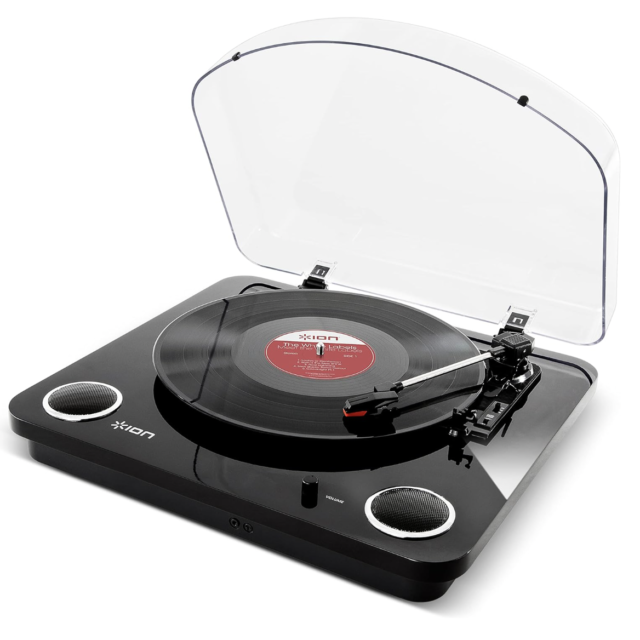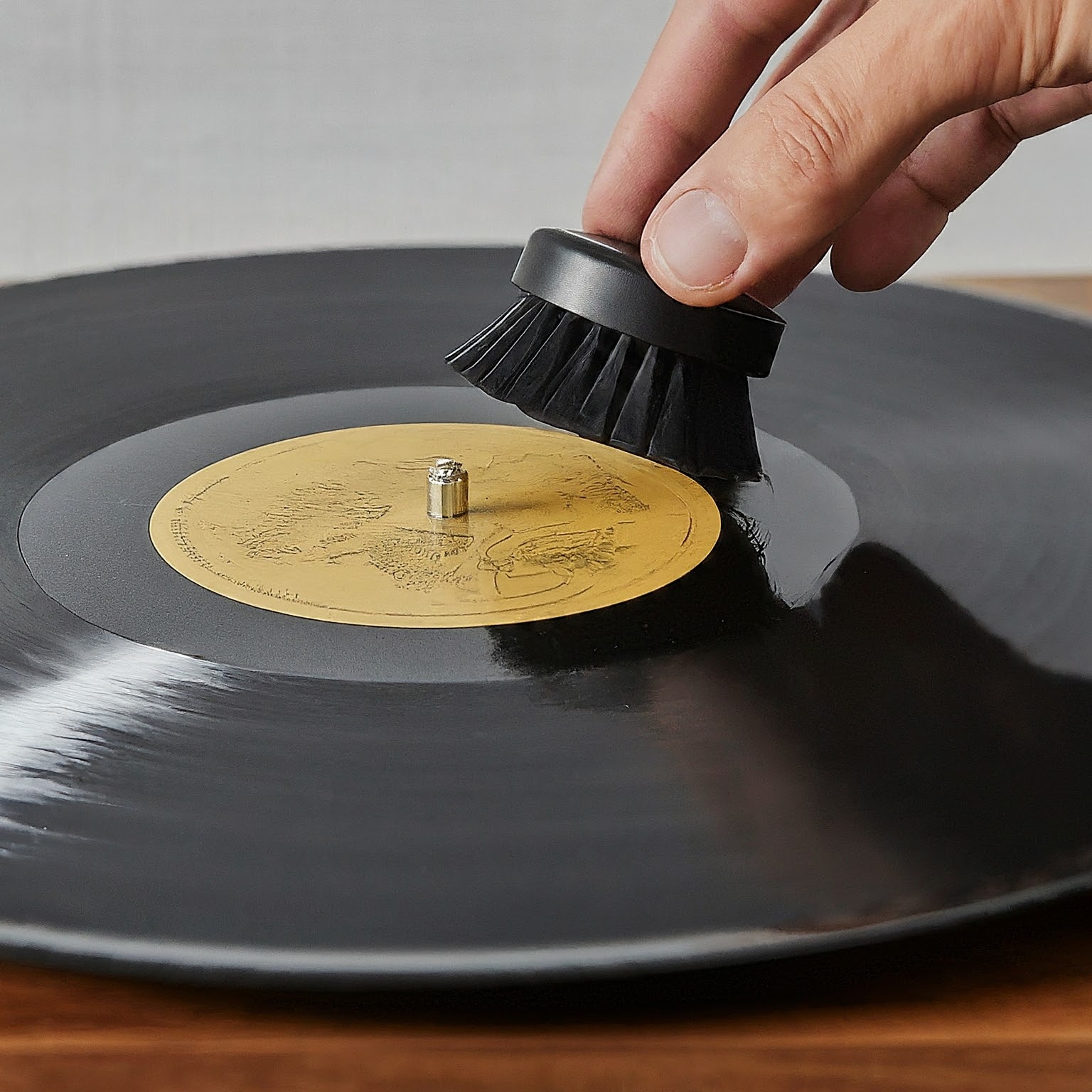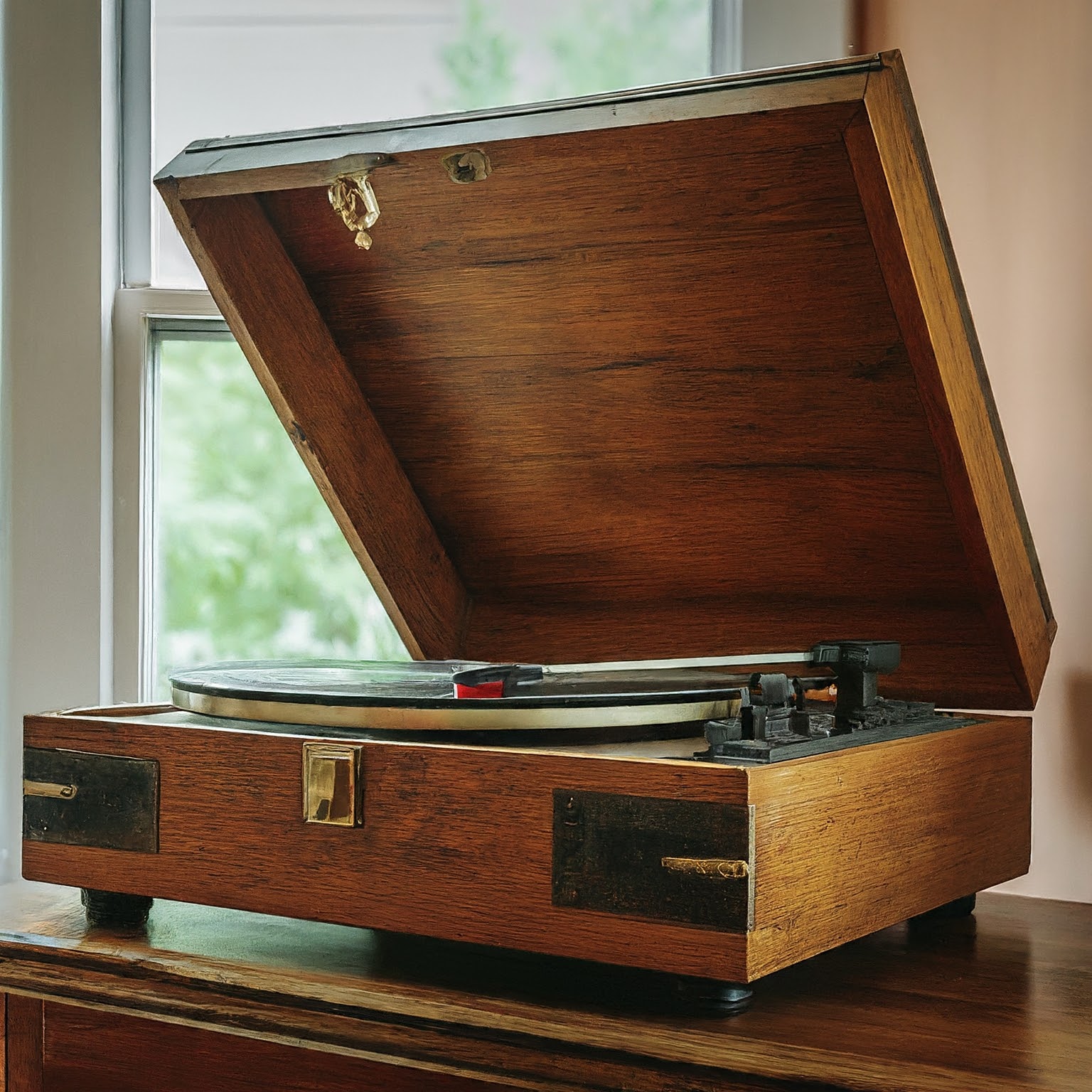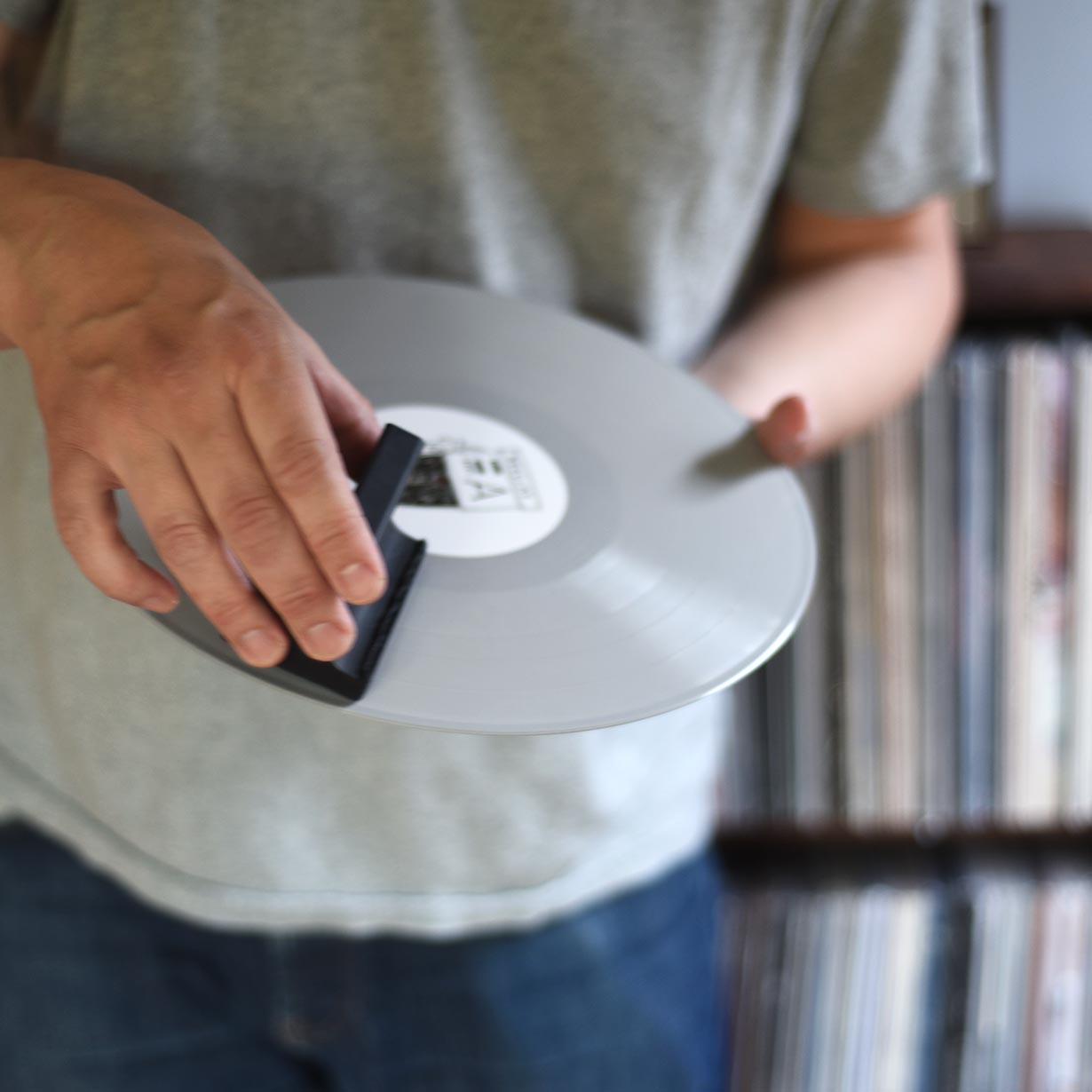
*Updated 2025*
Table of Contents
Why Clean Vinyl Records: Eliminating Pops and Clicks
We’ve talked a lot about getting the most from your vinyl collection by building a solid hi-fi system (read our guide to the top 5 best turntables). We recently posted a complete guide to buying the best turntable or record player. But, for optimal sound, keeping your records clean is just as important as having good equipment. The purpose of this post is to teach you how to clean vinyl records to get the best sound from them.
You know those pops and clicks that many people associate with vinyl records? Unless your record is scratched or scuffed, the culprit is the dirt and dust that has collected in the grooves of your records. Get rid of the dirt in the grooves, get rid of the pops and clicks.
So, how do you clean a dirty vinyl record? Here are three methods for cleaning vinyl records:
Method 1: Vacuum-Powered Record Cleaning (Professional Method)
Perhaps the best way to deep clean your dirty vinyl records is with a vacuum-powered vinyl record cleaner.
Why Choose a Vacuum Cleaner:
The benefits of a vacuum cleaner made specifically for cleaning vinyl records is that it sucks up the dirt and dust that has settled into the grooves of the vinyl while simultaneously minimizing pressure and physical contact with the delicate record itself.
Step-by-Step Process:
- Prepare your equipment – Ensure your vacuum record cleaner is set up according to manufacturer instructions
- Place the record – Securely position your vinyl on the cleaning platform
- Apply cleaning solution – Use the recommended amount of cleaning fluid on the record surface
- Operate the vacuum – Turn on the machine to remove dirt and cleaning solution
- Dry the record – Allow the record to fully dry before playing or storing
We’re NOT recommending using a normal vacuum cleaner on your records. There are many vacuum machines on the market that are made to clean vinyl records but you’ll get the most bang for your buck from the Record Doctor VI Record Cleaning Machine.
There are fancier models out there – including the Pro-Ject Vinyl Cleaner VC-E – but they’re more than twice the price but offer the same results.
Method 2: Record Washer System (Mid-Range Solution)
If you don’t want to shell out for a vacuum cleaner for your records, you can go with a less fancy record washer.
We like the starter kit from Spin Clean. It’s a manual system composed of brushes and rollers that uses an accompanying solution to clean your records. You simply insert the record into the cleaner, rotate it by hand a few revolutions, and you’re done.
Step-by-Step Process:
- Set up the washer – Fill the washer basin with distilled water and the recommended cleaning solution
- Insert the record – Place your vinyl between the cleaning brushes
- Rotate the record – Gently turn the record 3-5 complete rotations in each direction
- Remove and rinse – Take out the record and rinse with distilled water if recommended
- Dry completely – Use a microfiber cloth to dry, or place in a drying rack
It does involve a little more pressure on your records so it’s not quite as optimal as the vacuum based systems but it’s more than sufficient for most collectors. It’s also a good solution for someone who wants to deep clean very dirty vinyl records.
Method 3: DIY Hand Cleaning Method (Budget-Friendly)
The best way to clean vinyl records without a fancy washer or vaccum? You easily clean your records by hand with just a brush, some cleaning solution, and a microfiber cloth. It is easy too. There are really just four steps on how to cheaply and easily clean vinyl records, DIY style:
Step-by-Step Process:
-
-
- Prepare your brush – You’ll need a record brush. . We use (and recommend) the Mobile Fidelity Record Cleaning Brush but there are plenty of good options. For example, we also have and often use the AudioQuest Record Clean Brush. You don’t need both but with exceptionally dusty records we’ll sometimes give both a shot before moving on to washing a record.
- Brush the record – Begin by gently brushing the surface of the record in a circular motion (always follow the grooves) with the brush. Don’t use too much pressure here – your goal is to pick up larger dust and dirt on the record but you don’t want to damage the grooves.
- Apply cleaning solution – Apply a small amount of your selected cleaning solution to a microfiber cloth (not directly on the record)
- Clean in circular motions – Gently wipe the record surface following the direction of the grooves
- Rinse if necessary – For heavily soiled records, you may need to rinse with distilled water
- Dry thoroughly – Use a clean microfiber cloth to completely dry the record before playing or storing
-
DIY record cleaning is really as easy as that! Here’s more:
Honestly, I recommend doing this step every time you play a record. I don’t wash my records often but I do lightly brush them before most plays. However, if you bought a record used, the record has been in storage for a long time, or it just looks visibly soiled and brushing is not cutting it – you’ll want to move on to the next steps for a deeper cleaning.
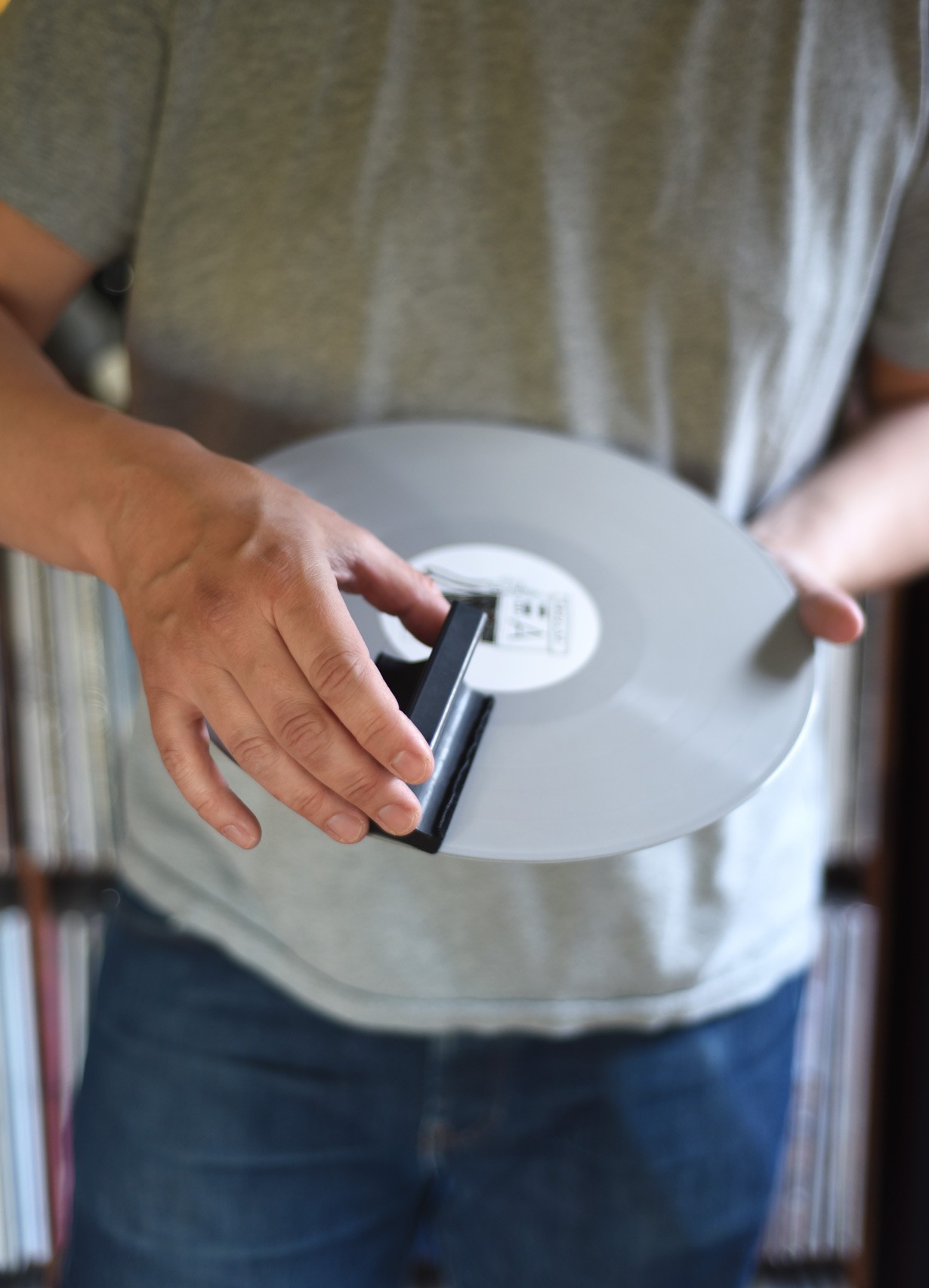
The Best Vinyl Record Cleaning Solution
Although some people use a combination of water and dish soap, we don’t recommend it. Instead, we recommend using a cleaning solution designed for use on vinyl records. However, not all record cleaning solutions are created equal. In particular, we recommend avoiding any that contain isopropyl alcohol. While it will clean the muck off your record, many people report that over time it’ll also damage the protective coating on your vinyl. If you are going to use a solution with isopropyl alcohol – use is sparingly.
So what is the best vinyl record cleaning solution? The archivists at The Library of Congress use a combination of a mild surfactant called Tergitol with deionized water. If it’s good enough for them, it’s good enough for us. We think this is the best vinyl record cleaning solution. You can pick up a Tergitol-based concentrate from Amazon. You only need to add a couple drops to your water. You can pick up the deionized water from Amazon as well. Lightly spray the disc with the Tergitol solution and let sit for about 4-5 minutes. Then using a record brush like the ones we described above, lightly wipe the discs in the direction of the grooves to clean up the soapy mixture.
Repeat this process one more time using only the deionized water (so no Tergitol) to clean off any remaining soapy residue.
Dry The Record
There is no trick as to how you clean vinyl records with microfiber cloth. Using a soft microfiber cloth just gently pat the record dry. You may want to let the record dry for up to thirty minutes before returning it to it’s sleeve to make sure it’s completely dry. Excess moisture can cause the sleeve to mold and damage the record.
If you really want to protect your investment, place the newly cleaned records in fresh archival inner record sleeves like these ones from Mobile Fidelity.

